John Ellerbrock: Nikonos RS lens compatibility with RED 8K sensors
Nikonos RS Compatibility with RED 8K Vista Vision Sensor
By John Ellerbrock.
Background
SLR and DSLR lenses are designed to cover Full Frame 35 (FF35) dimensions, a de facto standard size that stretches back decades to the film era. While new digital sensors have varied in size, the FF35 size has remained a standard for legacy and compatibility. The new RED 8K Vista Vision sensor is slightly larger than FF35, so RED users are naturally asking what lenses may have extra margin to cover this sensor to make use the full 8K sensor resolution (8192 x 4320). Note that this resolution is 8K Full Frame (8KFF) utilizing all pixels on the Vista Vision sensor.
When speaking of lens coverage, the jargon is “image circle”, which is simply the entire circular image focused by a lens onto the sensor plane. Only the light falling on the sensor is utilized, the rest falls above, below and to the sides. The image circle must reach to the corners of the sensor to avoid vignetting – cutoff dark corners – which is generally considered an image killer. Thus the full diagonal dimension of the sensor represents the image circle size that a given lens must cover. The FF35 and 8KFF sensor image circles are 43.3 mm and 46.3mm, respectively.
Nikonos RS lenses were produced in the 1990’s for FF35 film use – 13mm fisheye, 20-35 zoom, 28mm prime and 50mm macro. Designed by Nikon specifically for underwater they remain among the best optics for our favorite medium, providing a clean image with corner to corner sharpness.
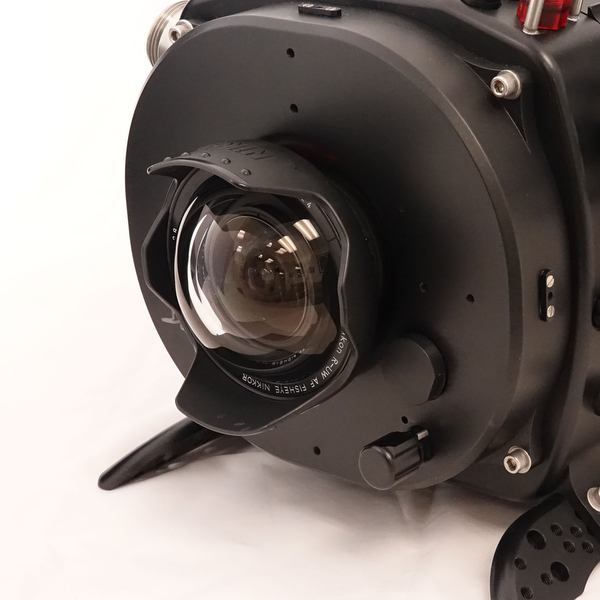

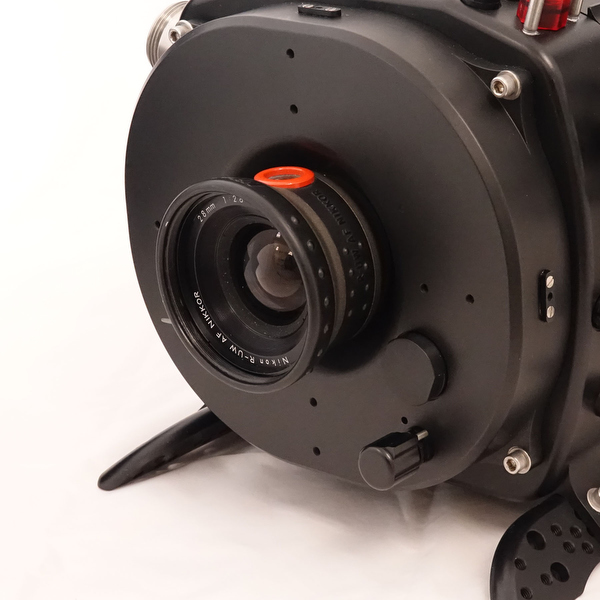
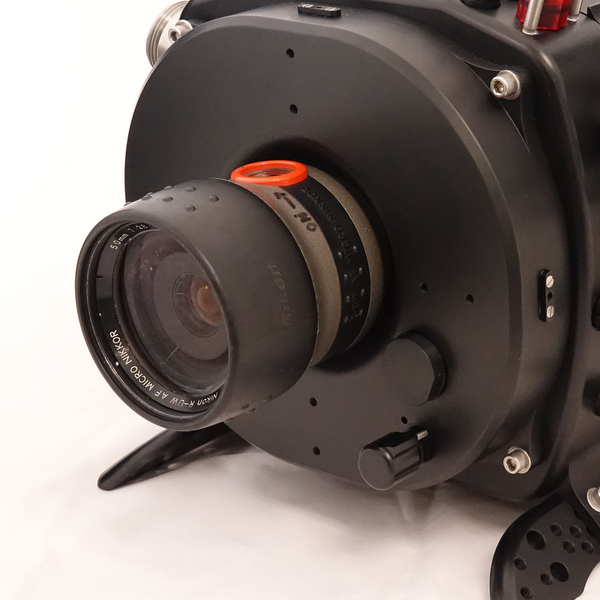
For this reason Gates adapted the Nikonos RS lenses for use with RED DSMC1 and DSMC2 cameras and the Vision Research Flex4K. In this article we investigate the compatibility of these lenses with the RED 8KFF sensor.

Preparation
It helps to have Solidworks, a factory and 3D printer at one’s disposal for a project like this. Throw in a little creativity, and viola! An image circle test fixture is born. The fixture uses the Gates Nikonos RS adapter on one side with the test Nikonos RS lens mounted. The opposite side held a sheet of paper as the sensor plane, and sandwiched between the fixture and a light blocker to the camera. On the paper was printed a one-to-one scaled outline for both FF35 and 8KFF sensors and IC’s. Tight alignment of the sensor plane outline to the Nikonos RS adapter was important, so I also made registration marks on the sensor plane paper to do so.
Expectations
An axiom of lens design is this: Short focal lengths require much light bending. Lenses with a wide field of view (FOV) take light rays on a tortuous path of refraction. This is difficult to accomplish without introducing distortions and aberrations to the image. And it is compounded when trying to cover bigger sensors, too.
For this reason, I expect lens designers to aim for the bare minimum image circle coverage necessary for short focal length lenses. That means the Nikonos RS 13mm could be expected to cover the FF35 image circle and no more. The 20-35 would be in a grey area. The 28 and 50mm lenses would likely have no problem with the 8KFF image circle.
Results
I don’t usually make accurate predictions, but I nailed this one.
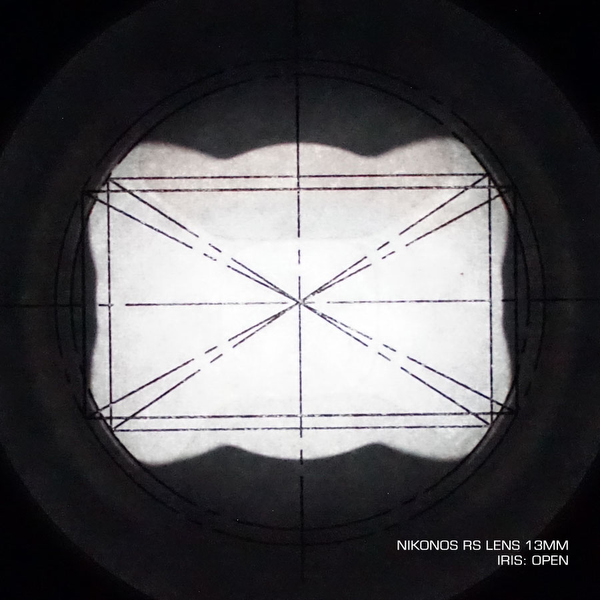
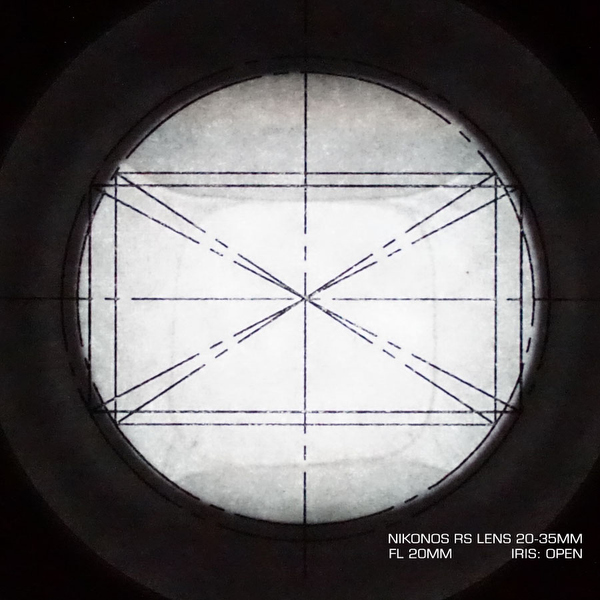
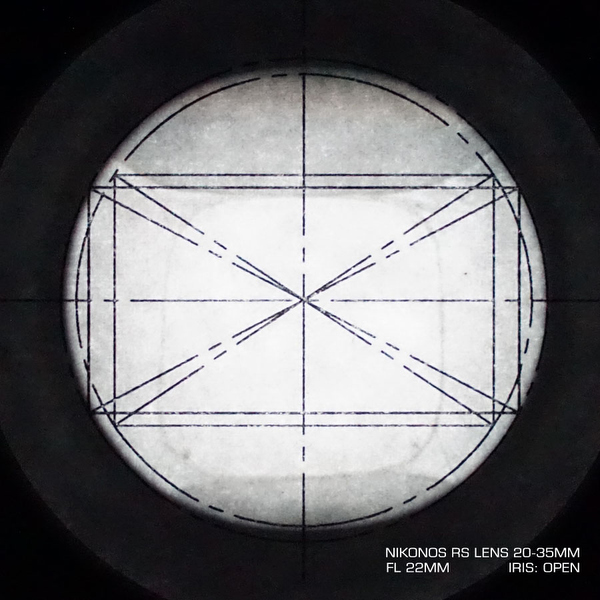
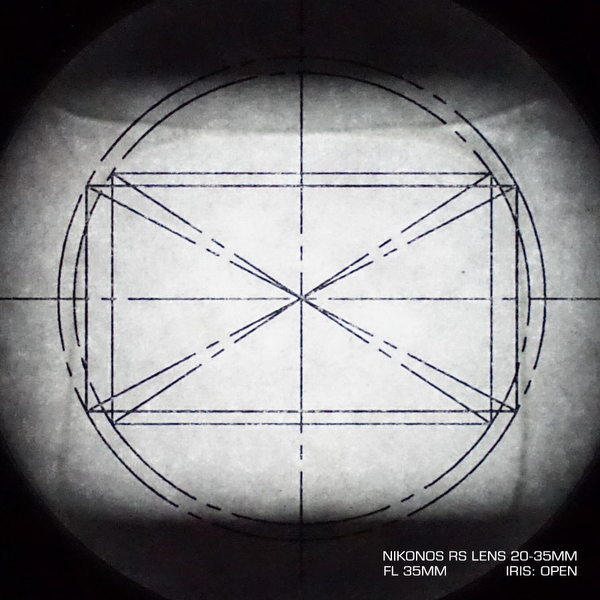
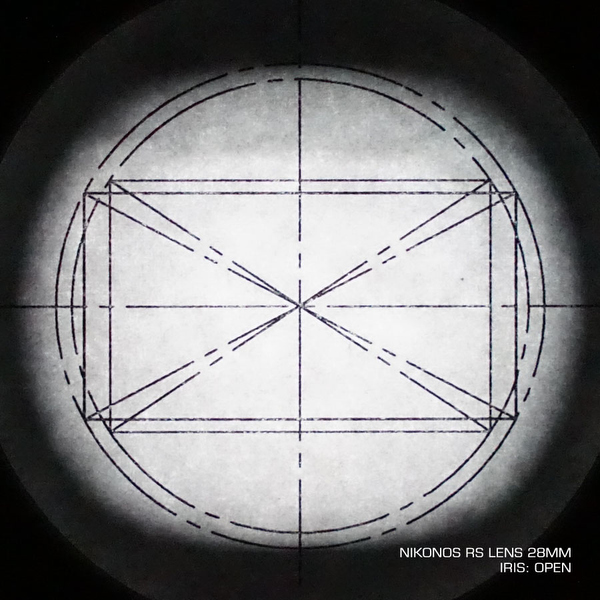
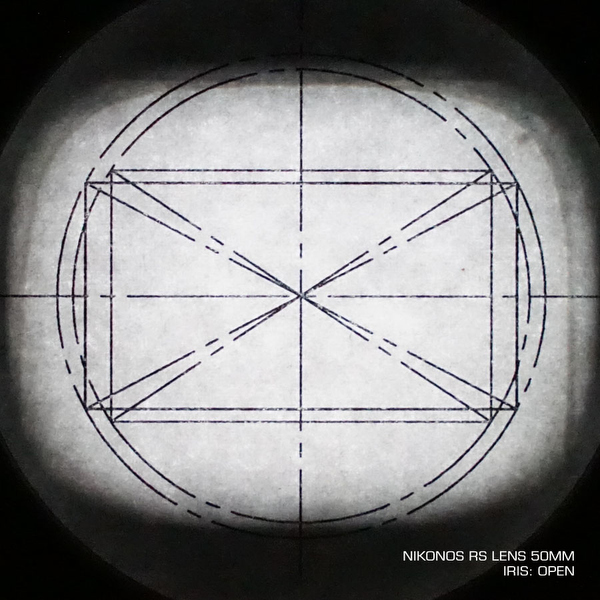
The test results are shown in the attached photos. Note the 13mm fisheye lens has a shade to crop oblique light entering the lens, most likely to minimize reflections. Also note that the image circle has a hard cutoff.. This lens will likely exhibit hard edge corners on an 8KFF image. Assuming so, the only way to mitigate the vignetting is to change resolution to something less than 8KFF like 8K 2:1 or 8K HD, which more closely approach the FF35 image circle.
Contact me via the Gates website with questions or comments please.
Resources
8K Lenses by Phil Holland
8K Image Circle by Phil Holland.